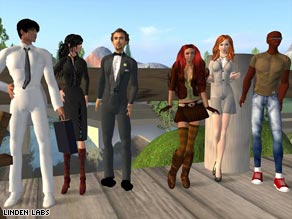Everywhere I keep hearing about travel restrictions. Amex just released a study pointing out three quarter of corporations intend to cut or freeze travel budget. In the current circumstances, this is probably the right thing to do for businesses, and, although it may not make airlines happy, it will help the bottom line of many of them. However, the question remains, are businesses ready for large scale remote collaboration and do they have the tools and experience required to do so. Are we also increasingly going to see remote visits to customers. This is going to be interesting, and we all have to experience and learn a lot in the process.
Being in a global role, I am often ask to go and meet a customer to share best practices, to update him on new technologies & processes, or to discuss key processes with him. Up till now, these meetings have happened face to fact, but with the current clamp down in travel, we are highly motivated to do this remotely. Well, I have two hurdles to overcome. I first need to convince my sales teams that this can work and that we can have the level of discussion we used to have face to face. I don't know how your sales people are, but I can tell you many of ours do not like surprises, so when they are confronted to the idea of doing a remote sales call, many of them get extremely frustrated.
Once the sales people are convinced, it is time to go and suggest this to the customer. And here we have two types of reactions typically. Some customers (typically the ones that have similar travel bans), understand and are prepared for the experience. Others have the feeling they are not important because we do not travel to 
How the meeting takes place and how to make it work is dependent on the technology used. If you are able to use telepresence, you can just run the meeting as any other. The only thing you will nit be able to do is exchange business cards and shake hands, but frankly, you can do without that.
If the meeting happens over the telephone, I would suggest you put a couple things in place. Here are some suggestions:
- If you present something and the customer does not know you, put your picture in one of the first slides. This will allow the customer to see how you look like and to imagine the person behind the voice.
- Try to have your local sales person in the same room as the customer, allowing him/her to capture the body language of the customer and the dynamics in the room
- If possible, use an instant messaging tool for the sales person to communicate to you some of the reactions in the room
- Be extremely sensitive to the tones of the voices, as they may tell you how your message is being received and may allow you to correct things quickly.
In any case, do a debrief with your sales team to understand how well the meeting went. They are your eyes with the customer and you need to rely on them to understand the dynamics. You may want to discuss with them before the meeting about what you expect them to do and how they can communicate with you. If you cannot use instant messaging for example, you may want to define some code phrases to be used to warn you about the way the customer reacts.
These are just some ideas on how to make the best of having to work without traveling. Some more can be found on Ken Molay's " the webinar blog". I do hope all these are useful.

 But frankly, to use this tool as a collaboration tool, it is critical that you know who you are dealing with. You need be able to trust the other people with whom you are working. Information will be exchanged, strategies will be exposed, points will be discussed, how sure are you the other people are who they pretend to be? You may argue that this can also happen in real life, when you meet somebody previously unknown to you. Most often you develop a protocol to recognize each other, like holding the good old newspaper. On TV people are not who they are supposed to be, but how often does this happens in real life.
But frankly, to use this tool as a collaboration tool, it is critical that you know who you are dealing with. You need be able to trust the other people with whom you are working. Information will be exchanged, strategies will be exposed, points will be discussed, how sure are you the other people are who they pretend to be? You may argue that this can also happen in real life, when you meet somebody previously unknown to you. Most often you develop a protocol to recognize each other, like holding the good old newspaper. On TV people are not who they are supposed to be, but how often does this happens in real life. ou have 30+ people in the room, expecting you to make the best out of the time allocated, and deliver them a perfect job, you can just not take the risk of having problems. And
ou have 30+ people in the room, expecting you to make the best out of the time allocated, and deliver them a perfect job, you can just not take the risk of having problems. And 